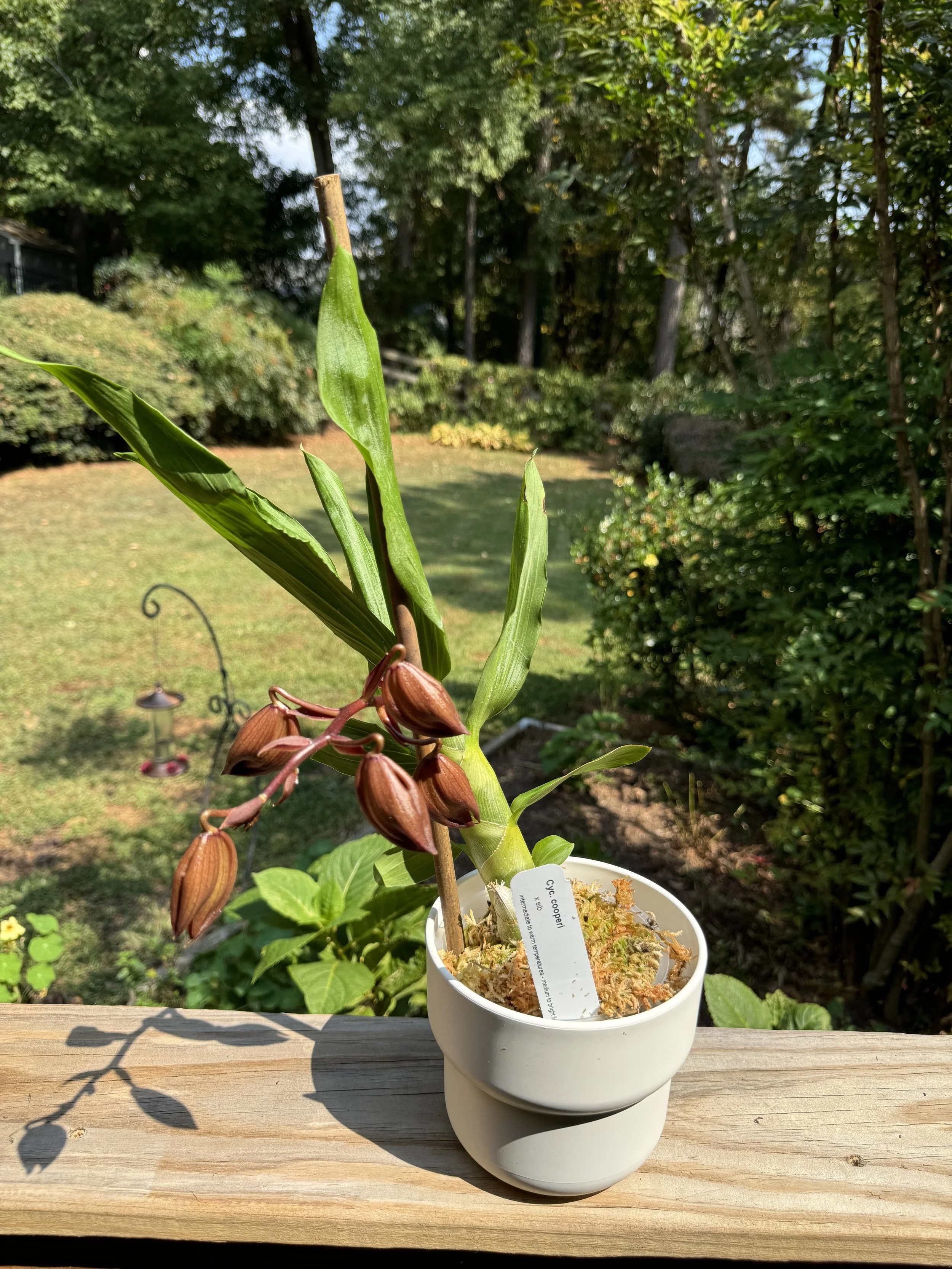Cyc cooperi
Cycnoches cooperi
(species)
I have managed to kill several of these! The first two came from sunsetvalleyorchids.com, the original and best source on the web for every kind of catasetum you can imagine. They were the highest quality but much smaller. They were perfectly healthy when they arrived so I’m not sure what happened to them. This time I had the good sense to purchase a larger one, in spike, from orchidweb.com (my all around favorite, no-fail, orchid vendor). It bloomed very well, everything I hoped for. I just love the color, plus it has a delicate cocoa fragrance, very rewarding.
History and Features
Cycnoches cooperi is a fascinating species orchid native to Brazil that exhibits remarkable sexual dimorphism, producing either male or female flowers depending on light levels. Higher light produces male flowers, which appear in greater numbers on arching spikes. Female flowers, produced in lower light, are larger, fewer in number, and tend toward deeper greenish hues. Both types of flowers release a pleasant vanilla-spice fragrance during warm daylight hours, making this unusual species, with its unique reproductive strategy, a prized addition to any orchid collection.
Culture
Catasetenae require different care than many other orchids. In the fall or winter they will drop their leaves, often before they bloom. I advise watching numerous video tutorials so you can decide the best protocol for your environment. Here’s a good one to get you started.
Water and Fertilizer
Active Growth (Spring-Fall)
In summer they like a lot of water but don’t let them sit in water
During the growth season, from around June to September they grow like weeds and need lots of fertilizer, 1 tsp per gallon once per week, or weaker if you water more often.
After repotting you can sprinkle slow-release fertilizer. MSU or oscmocote will work. Then fertilize during growth as usual.
Winter Dormancy
Drastically reduce or stop watering
Around December 1st stop watering completely
Resume when new growth starts
Fred Clarke advises not watering until roots are at least 6-8 inches long.
Potting and Media
Catasetum orchids are fairly forgiving and will grow in a variety of media
Medium bark (1/2 inch) with perlite, pure sphagnum moss or other well-draining media
Plastic or clay pots both work. The PET method has become very popular, although I have not tried it. Check out this tutorial on YouTube.
Additional Notes
Deciduous - loses leaves in winter
Heavy feeder during growing season
Stop fertilizing when growth slows, around October
Watch for spider mites on their leaves during the growing season. Treat them immediately or they can do a lot of damage. I sprayed mist directly into and between the leaves of all my catasetenae this summer to keep them at bay. They attack the leaves, so you won’t have issues once those drop.
The flowers on mine lasted between 3 and 4 weeks





